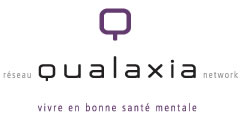
A major public health issue
In the past two decades, work and employment relations have undergone huge transformations. With regards to work organization, new management methods have resulted in high intensity work, bringing about an increase in the pace and rhythm of work, tighter control on individual production and elimination of idleness. In short, this can be described as the quest for peak performance with a minimal workforce. In such a context, this decreased autonomy increases worker stress due to a lack of time, information and meaningful interaction with colleagues or immediate superiors.
Work transformation has frequently been analyzed for the economic benefits it brings to corporations in a global market. However, many studies have shown that prolonged exposure to stressful work conditions can result in various illnesses affecting mental health as well as the musculoskeletal and cardiovascular systems. These consequences are extremely costly both economically and socially, as evidenced by the continued increase in absenteeism for mental health problems, which represent the main cause of long-term absenteeism.
Identifying harmful aspects of work organization requires valid evaluation models that determine certain psychosocial dimensions in the workplace for which there is empirical evidence of a pathogenic effect on exposed workers. In addition to simplifying the psychosocial reality in the workplace to significant components such as health risks, these models facilitate the development and implementation of preventive measures in the workplace. There are currently two psychosocial risk models recognized internationally due to their considerable contributions in the production of consistent scientific knowledge regarding the significance of links between social and psychological phenomena in the workplace and the development of various illnesses. The first model is the Job Demand-Control-Support model (or Karasek’s model), in which work situations with a combination of high psychological demand and low decisional autonomy and social support increase the risk of developing physical and mental health problems. In the second model, called Effort-Reward Imbalance model (or Siegrist’s model) work situations with a combination of high effort and low reward cause pathological reactions on emotional and physiological levels.
|
|
|





Leave a comment
Your email address will not be published.